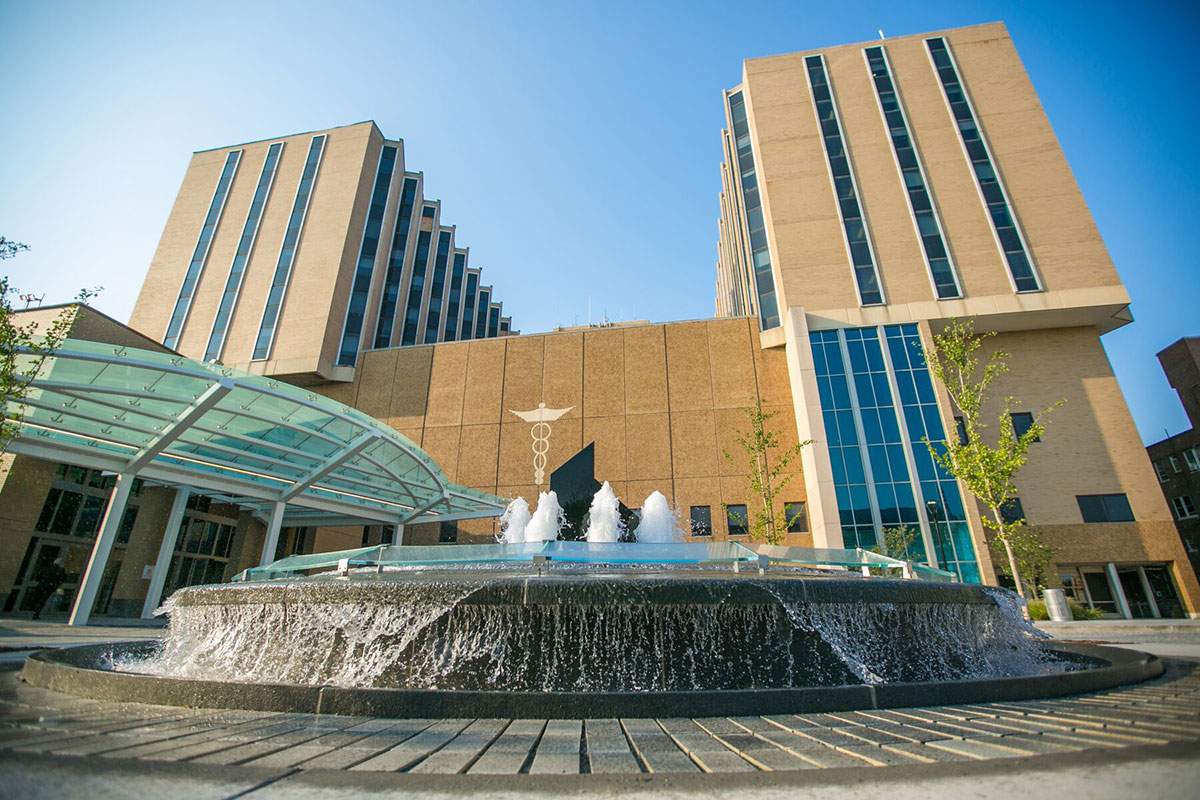Since her teenage years, Charlene Toth had one week each month where normal life gave way to cramps, bleeding and exhaustion. After learning that these symptoms were caused by uterine fibroids, Charlene went to Bridgeport Hospital in December 2021 to become the first person in Connecticut to have her fibroids treated with laparoscopic radiofrequency ablation, a minimally invasive treatment for symptomatic uterine fibroids.
Charlene, now 37, who works as a materials manufacture planner, pushed her period pain aside for years and resumed her activities once the period was over. It wasn’t until she started digging into her symptoms and finding support online that she began speaking with her doctors about the pain.
These discussions led to an ultrasound that showed Charlene suffered from fibroids, non-cancerous tumors on her uterus. These tumors can range from undetectable to the human eye to the size of a watermelon.
It is thought some 20-80 percent of women have fibroids. The window is large because many women have no symptoms and the ones who do tend to go misdiagnosed or undiagnosed.
The effect of fibroid pain ripples beyond one week a month. People can suffer from anemia due to blood loss, chronic back pain, pelvic pain, frequent urination and a psychosocial burden from managing these symptoms.
Fibroids are the biggest reason for hysterectomies, the removal of the uterus. This surgery eliminates the ability for a person to become pregnant and could require a few weeks of recovery time.
Charlene wanted to keep her uterus. In 2019, she went to a radiologist to have uterine fibroid embolization, which involves the use of a catheter to deliver small particles that block the blood supply to the fibroid.
“The recovery was rough and two years later I was hemorrhaging during a period,” said Charlene. “I wanted to try a myomectomy next, which is a surgery that just targets the fibroids, but a friend recommended that I see Dr. Murray who presented radiofrequency ablation as an option. It was the first time anyone mentioned this procedure to me.”
Radiofrequency ablation has been used since the 1990’s to treat certain cancers. It was approved in 2012 by the FDA to treat fibroids and is found to reduce the size of fibroids from about 40-70 percent. The treatment was supported by the American College of Obstetricians and Gynecologists in June 2021.
“We are proud that Bridgeport Hospital is the first facility in Connecticut to offer this procedure,” said
Mary Murray, MD, Obstetrics and Gynecology, Bridgeport Hospital. “Patients don’t want part of their body taken out unnecessarily and many do not have the luxury of recovery time.”
Laparoscopic radiofrequency ablation is a minimally invasive procedure that requires two incisions about the size of M&M’s. A laparoscopic ultrasound is then used to identify the fibroids, and a handpiece is inserted that delivers radiofrequency ablation to the fibroid tissue. Controlled heat then destroys the fibroid tissue, causing it to shrink over time and alleviate symptoms such as heavy bleeding or bloating.
The
first published study of radiofrequency ablation for fibroids was in 2002 and recorded improvements in menstrual blood loss and symptom severity.
A few weeks after surgery Charlene started to notice a difference in her quality of life.
“I did a lot of listening to other women to get their perspective,” said Charlene. If people are experiencing period pain – even if they aren’t hemorrhaging or passing out – there is value in discussing it with their doctors because there could be an underlying and treatable cause.”
